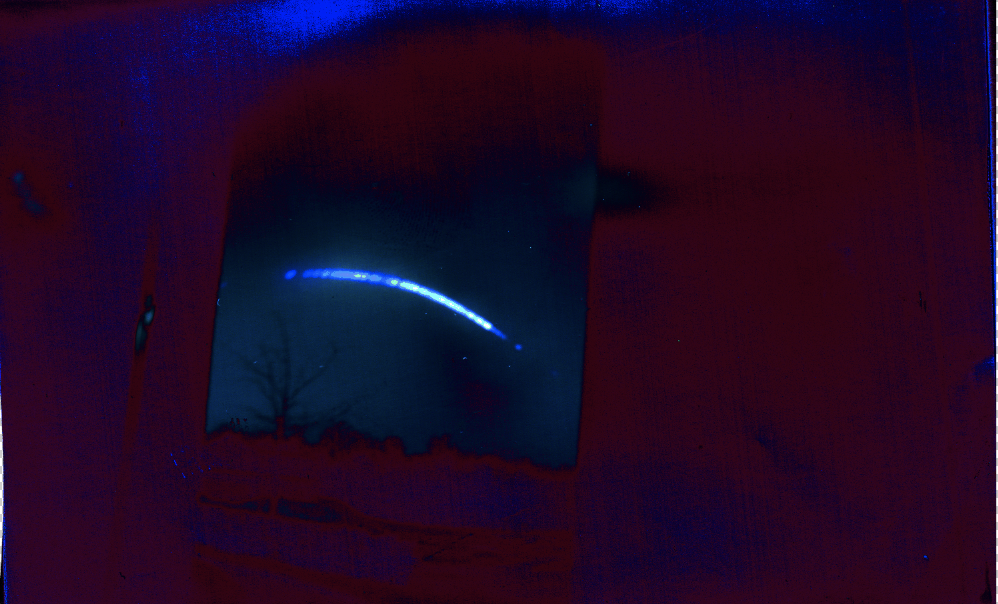2024 Honorable Mention – Robin Jiao

Blue Corona
Digitally edited solargraph photo
Abstract
This project used pinhole photography to capture a long-exposure solargraph image. An homemade pinhole camera made out of an empty aluminum can containing light-sensitive photographic paper was set up to record the sun’s path outside of my house. The resulting solargraph visualizes the arc of the sun across the sky over the course of a few days. The once-blank paper was transformed by time and light into an artistic abstraction revealing celestial motion. The exposure relies on the principles of light and chemical reactions. The solargraph both demonstrates and aestheticizes the scientific phenomena that shape the passing days.
The solargraph relies on several key scientific principles. First, the pinhole camera operates based on the camera obscura effect. Light passes through the small aperture and projects an inverted image onto the opposite surface. The pinhole acts as a natural lens. Second, the exposure relies on recording light over time using light-activated chemical reactions. The hours, days and weeks of exposure allow the light path to emerge via silver salts emulsified in gelatine reacting to ultraviolet and visible lights in the natural environment.
The arc of the sun’s passage is caused by the Earth’s axial tilt on its axis and orbit around the sun. The changing height and direction of the arc depends on the season and location. The exact pattern recorded by the solargraph depends on the orientation and latitude of the pinhole camera. The resulting image reveals motion and beauty in the form of one or more concentric rings of light in the sky over the course of a long-term exposure to light. The solargraph transforms the cold mechanics of celestial motion into an artistic meditation on time and perspective. Our fixed position yields a shifting sky, turned into abstraction by the simple pinhole. Scientific principles and chemistry enable this interplay of logic and creativity.
